
Sharp MZ-700
Posted by musovern on Apr 13th, 2018 in Sharp, Vintage Computers | 0 comments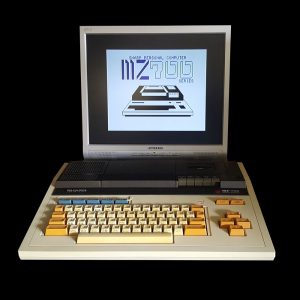
The MZ-700 was launched in Japan in October 1982. lt was the first Sharp home Computer with colour, but it came without a built-in display unit; instead, sockets were provided for a colour TV or an RGB Monitor; or a B/W TV set or a Mono Monitor. lt also had a built-in printer I/F with a switch which allowed you to run the MZ-1P01 4-pen plotter-printer or a more standard MZ-80P5( K ) dot-matrix printer.
Thus, with its clock speed of 3.5MHz, the MZ-700 seemed to meet many of the criticisms levelled at the MZ-80A when it was launched in June 1982. But it was still only a halfway-house – the printer I/F only suited Sharp printers, the screen was only 40 columns, and to run disk drives you needed an extra interface of some kind.
Read More...Olivetti M24
Posted by musovern on Apr 13th, 2018 in Olivetti, Vintage Computers | 0 commentsThe Olivetti M24 is a computer that was sold by Olivetti in 1983 using the Intel 8086 CPU. The system was sold in the United States under its original name by Docutel/Olivetti of Dallas. AT&T and Xerox bought rights to rebadge the system as the AT&T PC 6300 and the Xerox 6060 series, respectively
Read More...BBC Model B
Posted by musovern on Apr 13th, 2018 in BBC Model B, Vintage Computers | 0 comments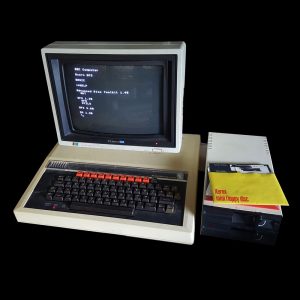
Acorn BBC model B. The Model B had the same features but had 32 KB RAM (expandable to 64K).
The “Tube” was an expansion port which was designed to connect other processors to the BBC (6502, Z80, 68000 or ARM 1 RISC). An interface card was specially designed for the tube. It used another 6502 and a Z80.
One of its most popular peripherals was the “Torch” floppy disk unit, a 5.25″ floppy disk drive with a Z80 which allowed the BBC to use CP/M software.
Read More...Bondwell Model 2
Posted by musovern on Apr 10th, 2018 in Bondwell, Vintage Computers | 0 comments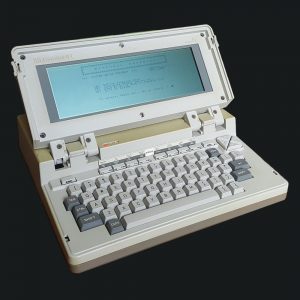
This machine was produced by the Bondwell Holding Company, LLC, of Hong Kong, and came out in 1985. It arrived an interesting juncture of the death of CP/M and the birth of laptop computers. While there are earlier laptops and even earlier CP/M laptops, the Bondwell Model 2 came late enough that there was good enough LCD resolution (640×200) to support an 80×25 line display; CMOS chips were advanced enough to allow long battery life (up to eight hours), and 3.5 inch floppies were already commonplace. The only technology lacking from today’s perspective is that this machine used two heavy 6V sealed lead acid batteries for its power source.
Read More...Panasonic RL-H7000W
Posted by musovern on Apr 6th, 2018 in Panasonic, Vintage Computers | 0 comments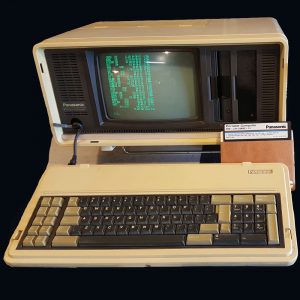
Panasonic Model RL-H7000W
This is a luggable IBM-PC compatible system. It tends to offer an all-in-one solution for the perfect 80’s business man. Back in 1983 it was the first Japanese computer completely IBM-PC compatible (hardware & software).
It has a built-in thermal printer (80/132 columns, 8.5” wide) using paper-rolls. This was quite useful where you were on the move, but the weight of the whole system is also quite impressive. It is maybe transportable but surely not portable !
It was also possible to connect a more sophisticated printer through the Parallel port.
There is a 9” CRT green display built-in along with a brightness control.
PET 4016
Posted by musovern on Apr 4th, 2018 in Commodore, Vintage Computers | 0 comments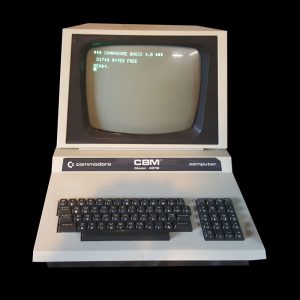
The PET 4032 was released three years after the original PET 2001. Although it has the same CPU running at the same speed, improved circuitry allows the 4032 to run substantially faster. Other improvements include more memory and a better keyboard.
4032 refers to 40 character display, with 32K RAM memory.
The 4032 has four ports to the outside world. An eight-bit parallel port, a port for a cassette recorder, a port that brings out the system bus, and an IEEE-488 port. Still in use today, the IEEE-488 bus is relatively complex, allowing up to 15 devices on the bus, but is mostly used for laboratory and scientific instruments.
Read More...Apple II
Posted by musovern on Apr 3rd, 2018 in Apple, Vintage Computers | 0 comments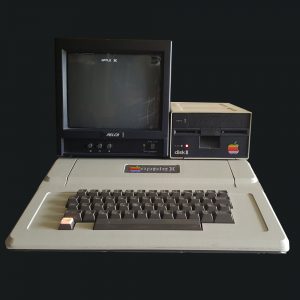
Apple II was the successor to the Apple 1, on which it was largely based. It was the very first commercial success of the Apple Computer Company. Because Steve Wozniak wanted to demonstrate his Breakout game with the new Apple II, he decided to add color, sound and minimum paddle support to the Apple 1 heir.
Apple II came with 4 KB RAM, but it was possible to add 4 KB or 16 KB RAM chips. Thus, the system could have memory in the following sizes: 4K, 8K, 12K,16K, 20K, 24K, 32K, 36K, or a full 48K. This was one of the strong points of the Apple II: from the beginning, it was designed with expansion in mind. The 8 expansion slots were further proof of that – users could expand their system easily, just by plugging cards into the slots.
Read More...TRS-80 Model 100
Posted by musovern on Apr 3rd, 2018 in TRS80, Vintage Computers | 0 comments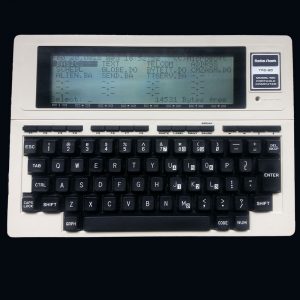
The Tandy 100 was actually a computer made in Japan by Kyocera. All the ROM programs were written by Microsoft, and even a few of them were written by Bill Gates (!) himself! These programs include a text editor, a telecommunication program, which uses the built-in modem (300 baud), and a rather good version of BASIC (no big surprise there).
Kyocera made this computer for three main companies: Tandy, Olivetti
(Olivetti M10) and NEC (PC 8201), these computers are the same except the case and some little differences in the programs and a few physical differences.
Read More...Apple IIc
Posted by musovern on Apr 3rd, 2018 in Apple, Vintage Computers | 0 comments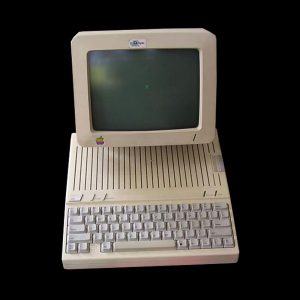
The Apple IIc was released on April 24, 1984, during an Apple-held event called Apple II Forever. With that motto, Apple proclaimed the new machine was proof of the company’s long-term commitment to the Apple II series and its users, despite the recent introduction of the Macintosh. The IIc was also seen as the company’s response to the new IBM PC, and Apple hoped to sell 400,000 by the end of 1984. While essentially an Apple IIe computer in a smaller case, it was not a successor, but rather a portable version to complement it. One Apple II machine would be sold for users who required the expandability of slots, and another for those wanting the simplicity of a plug and play machine with portability in mind.
Read More...Apple IIe
Posted by musovern on Apr 3rd, 2018 in Apple, Vintage Computers | 0 comments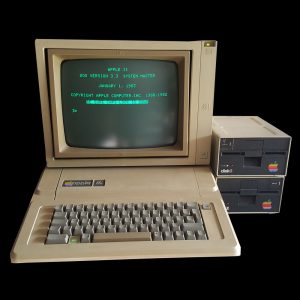
After having sold more than 750,000 Apple II and II+ systems, making it one of the best-selling brands in the global computing market, Apple released an updated version of the II+ – the Apple IIe (‘e’ standing for enhanced). It also was a great success and was widely used in schools and was still used in 2000 in some places!
While retaining the previous model’s capabilities and software library, the enhanced version featured a revised logic board, keyboard and casing design. Since its launch back in 1977, the Apple had been revised 13 times, but not so drastically as this model. The IIe used only 1/4 as many integrated circuits as the II+. Its keyboard featured 4 cursor keys and a lockable lid.
Read More...Apple IIe Platinum
Posted by musovern on Mar 8th, 2018 in Apple, Vintage Computers | 0 comments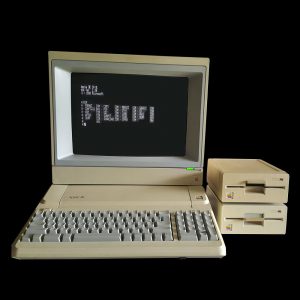
This was the last version of the Apple II series that was first released in April 1977 and finally discontinued in mid 1993, making it the only home computer in production for more than 15 years.
The major difference from the previous Apple IIe version is that the keyboard had been redesigned to be functionally equivalent to the keyboard of the Apple IIGS. The new keyboard incorporated an 18-key numeric keypad including two programmable function keys and cursor control keys.
The Platinum also had a new light grey-coloured case, a new motherboard design with a reduced chip count, and included a revised owner’s manual, a guide to AppleSoft BASIC and two double-sided training disks.
Finally, the IIe was shipped with the Apple 64 KB / 80-column upgrade card already installed.
Read More...Apple IIGS
Posted by musovern on Mar 7th, 2018 in Apple, Vintage Computers | 0 comments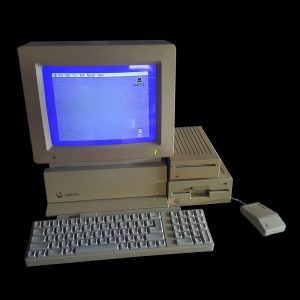
The IIGS was the first Apple computer system to utilise the Apple Desktop Bus (ADB). The ABD is a low-speed bi-directional serial bus that connects input devices, such as keyboards, mouse devices, and graphics tablets to the IIGS. It was later incorporated into the Macintosh line of computers, from the Macintosh II and up. ADB was eventually phased-out in favor of the more standardised USB (Universal Serial Bus) in the late 90’s.
As the Apple with the best color graphics, the IIGS also has the best sound. It utilises an Ensoniq sound chip, which has an entire 64K of RAM dedicated to it and is capable of playing 15 simultaneous sounds.
The IIGS has a GUI (Graphic User Interface) in 16 colors (up to 4096 colors in special graphics modes), a slow but powerful 16 bit CPU, great sound, and was loved by Apple fans everywhere. Sounds like a success – but by this time Apple was spending all its time and effort marketing the Macintosh line of computers, and the IIGS died a slow and uneventful death.
Read More...